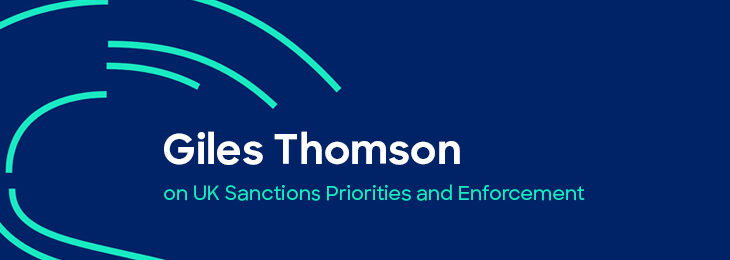
The Financial Crimes Enforcement Network (FinCEN) has released several publications asking financial institutions (FIs) to be on the lookout for elder financial abuse and to report this abuse when it is identified. While focusing on the elderly, it is a critical function to protect a vulnerable population and this includes legal reporting obligations, where the concept of monitoring for financial abuse can and should be expanded beyond the elderly.
What Is Financial Abuse?
Financial abuse, also referred to as economic abuse, is defined by the U.S. Department of Justice (DOJ) as follows:
“Controlling or restraining a person’s ability to acquire, use, or maintain economic resources to which they are entitled. This includes using coercion, fraud, or manipulation to restrict a person’s access to money, assets, credit, or financial information; unfairly using a person’s personal economic resources, including money, assets and credit, or exerting undue influence over a person’s financial and economic behavior or decisions, including forcing default on joint or other financial obligations, exploiting powers of attorney, guardianship, or conservatorship, or failing or neglecting to act in the best interests of a person to whom one has a fiduciary duty.”1
Financial abuse can affect anyone at any time. Three types of financial abuse include:
- Elder financial abuse
- Domestic financial abuse
- Childhood financial abuse
Elder Financial Abuse
The Consumer Financial Protection Bureau (CFPB) reported in September 2022 that a large number of older adults lose money due to elder financial abuse and these victims rarely recover.2 The DOJ reported that the National Adult Mistreatment Reporting System documented 46,279 victims of adult mistreatment over the age of 60 across 36 states in 2021, with 19,087 or 41% of victims suffering exploitation.3 In most cases, the relationship to the perpetrator was a family member. The Internet Crime Complaint Center reports that over 82,000 victims over the age of 60 reported elder fraud, with losses totaling $3.1 billion in 2022, which is an 84% increase in losses over 2021.4
The forms of elder abuse can range from stranger fraud to family exploitation, along with everything in between. Most people are familiar with the concept of romance and grandparent scams, where criminals rely on relationships to obtain funds. But the increasing trend of pig butchering scams, may present a heightened emerging threat to this already vulnerable population. What starts as a seemingly innocent email or phone contact turns into a full-blown scheme to invest in fake offerings, often involving cryptocurrency.5 Targeting an already lonely and isolated population that tends to be focused on ensuring and solidifying their financial future, pig butchering exploits two basic needs: Human connection and financial security.
Lack of access to funds or assets is often a barrier to leaving an abusive situation as there is no way to pay for hotels, apartments, food or other necessities
Beyond pig butchering, cryptocurrency scams are on the rise according to the Federal Bureau of Investigation’s (FBI) 2022 Elder Fraud Report, accounting for over $1 billion and approximately 66% in losses in 2022.6 As cryptocurrency becomes a favored source of payment for fraudsters, it is showing up in more conventional fraud typologies, including investment and tech support scams, confidence and romance schemes, and lottery or inheritance ruses. Despite the increase in cryptocurrency fraud, consumers over 60 remain underrepresented in the cryptocurrency market. While they represent nearly 32% of the U.S. adult population, they only represent 10% of cryptocurrency owners.7 Fraudsters are reaping significant benefits from feeding on the need for financial security among a population conventionally seen as naïve about technology and new investment strategies.
Another emerging scam, an adaptation of well-known tech support schemes, is referred to as the “phantom hacker” scam. The FBI issued an alert on September 29, 2023, warning the public to be vigilant regarding this new twist on an existing scam. This multistep scheme involves two to three individuals advising a victim that their accounts are compromised and that they need to move their money to a “safer” third-party location.8 In the first half of this year, the FBI reported 19,000 victims with losses of more than $542 million, noting that almost 50% of the victims were over 60 years old.
Further, gaps remain in the process of recovering funds for victims of elder financial abuse. The CFPB reports that key impediments to the identification of elder financial abuse and recovery include the victim having a relationship with the perpetrator, cognitive decline, subpar responder training and resources, and the method and dollar amount of transactions (for instance, fraud involving large dollar amounts and transactions via credit or debit cards are easier to detect), among other challenges.9 Throughout the report, the CFPB identifies ways FIs should be helping:
- Identifying elder financial abuse based on changes in a customer’s banking patterns or behavior toward a caregiver
- Contacting customers when there are unusual debit or credit card purchases
- Training staff to identify the signs of elder financial abuse
- Investigating activity when reported by the customer
- Understanding reporting responsibilities beyond Bank Secrecy Act obligations, such as state-mandated reporting
Domestic Financial Abuse
The National Network to End Domestic Violence (NNEDV) reports that financial abuse occurs in 99% of domestic violence cases and is often cited by survivors as the primary reason survivors stay or return to an abusive partner.10 Domestic abuse is an epidemic across the world with more than 10 million women and men suffering physical abuse by an intimate partner annually.11 The National Coalition Against Domestic Violence reports that the cost of domestic violence exceeds $8.3 billion per year with survivors losing eight million days of work and 21%-60% losing their jobs for reasons related to the abuse.12 But there is something FIs can do to help. The red flags associated with financial abuse are similar to red flags monitored today for elder financial abuse and human trafficking (HT).
The NNEDV notes that financial abuse is one of the most powerful ways abusers keep survivors in the abusive relationship.13 Lack of access to funds or assets is often a barrier to leaving an abusive situation as there is no way to pay for hotels, apartments, food or other necessities. Survivors report, on average, having access to less than $290 while needing an average of nearly $800 a month to stay independent and safe.14 Defaulting on joint credit and coerced debt ensures survivors may not qualify for a variety of credit-based services such as housing rentals, auto loans or utility services.
Similar to HT cases, abusers may retain possession of the survivor’s identification documentation. That, coupled with restricting access to financial information and funds, can impede a survivor’s access to the banking system. That access may be critical to a survivor leaving their situation.
Childhood Financial Abuse
In 2021, the U.S. Department of Health and Human Services reported that 588,229 children would become victims of child abuse and neglect, based on nearly four million referrals of child maltreatment to child protective services across the U.S.15 Reports are broken into physical, sexual and psychological abuse, as well as neglect, meaning information on financial abuse is not separately tracked. A form of psychological abuse, childhood financial abuse is defined as the act of using money as a weapon to take advantage of a minor, typically taking one of three forms: Parental financial abuse, identity theft and teen financial abuse.16
Parental financial abuse and teen financial abuse mimic many of the same behaviors and red flags as domestic financial abuse and elder financial abuse. However, given the guardian/child relationship, the activity may be more difficult to detect. The most prevalent and unidentified is when a parent or guardian uses a child’s information to obtain a loan or purchase items they cannot afford. According to Syracuse University, the impacts often go undetected until after significant damage is done.17 This form of identity theft is detrimental to minors coming of age who may not be able to obtain credit on their own due to poor credit history.
Identity theft is a rising concern for children. According to the National Foundation to End Child Abuse and Neglect, children are 50 times more at risk of being victims of identity theft than adults due to their lack of credit history coupled with the fact that children do not have a need to check their credit scores.18 This results in a keen opportunity for thieves to use a relatively clean slate and go undetected.
How Can FIs Help?
There are three primary ways FIs can help:
- Monitor for red flags that might indicate all forms of financial abuse and emerging scams and issues.
- Train employees and customers to monitor for red flags and share bulletins on emerging schemes and issues as they are made available.
- Design programs to assist with opening accounts for vulnerable populations regardless of age.
Conclusion
Financial abuse is a broad problem that can impact all populations in a variety of ways, and FIs are in a keen position to provide a safer banking environment for survivors, identify additional criminal activity and possibly save more lives. This is another way to accomplish the goal of providing a banking system that is safe and accessible to everyone while rooting out criminal activity that puts customers at risk.
Stephanie Bye, CAMS, SVP Financial Crimes, WA, USA, sbye@quonticbank.com
- “Domestic Violence,” Office on Violence Against Women, U.S. Department of Justice, https://www.justice.gov/ovw/domestic-violence
- “Recovering from Elder Financial Exploitation,” Consumer Financial Protection Bureau, September 2022, https://files.consumerfinance.gov/f/documents/cfpb_recovering-from-elder-financial-exploitation_report_09-2022.pdf
- “EAPPA Data Overview,” U.S. Department of Justice, https://www.justice.gov/elderjustice/eappa
- “Elder Fraud,” Internet Crime Complaint Center, https://www.ic3.gov/Content/PDF/Elder_Fraud_Tri-fold.pdf
- “’Pig Butchering’ Scams: What They Are and How to Avoid Them,” FINRA, December 13, 2022, https://www.finra.org/investors/insights/pig-butchering-scams
- “2022 Elder Fraud report,” Federal Bureau Investigation, https://www.ic3.gov/Media/
PDF/AnnualReport/2022_IC3ElderFraudReport.pdf - James Royal, “Cryptocurrency statistics 2023: Investing in Crypto,” Bankrate, August 31, 2023, https://www.bankrate.com/investing/cryptocurrency-statistics/
- “’Phantom Hacker’ Scams Target Senior Citizens and Result in Victims Losing their Life Savings,” Federal Bureau of Investigation, September 29, 2023, https://www.ic3.gov/Media/Y2023/PSA230929
- “Recovering from Elder Financial Exploitation,” Consumer Financial Protection Bureau, September 2022, https://files.consumerfinance.gov/f/documents/cfpb_recovering-from-elder-financial-exploitation_report_09-2022.pdf
- “About Financial Abuse,” The National Network to End Domestic Violence, https://nnedv.org/content/about-financial-abuse/
- “National Statistics,” The National Coalition Against Domestic Violence, https://ncadv.org/STATISTICS
- Ibid.
- “About Financial Abuse,” The National Network to End Domestic Violence, https://nnedv.org/content/about-financial-abuse/
- “Before and Beyond Crisis: What Each of Us Can Do to Create a Long-Term Ecosystem of Support for All Survivors,” FreeFrom, p. 34, https://www.freefrom.org/wp-content/uploads/2022/08/Beyond-Crisis-PDF.pdf
- “Child Maltreatment 2021,” U.S. Department of Health & Human Services, 2023, https://www.acf.hhs.gov/cb/data-research/child-maltreatment
- “What is Financial Child Abuse?” The National Foundation to End Child Abuse and Neglect, https://endcan.org/2021/10/21/3-forms-of-financial-child-abuse/
- “Financial Abuse in a Child/Parent Relationship,” Syracuse University, October 17, 2022, https://financialaid.syr.edu/
financialliteracy/2022/10/17/october-2022-financial-abuse-in-a-child-parent-relationship/ - “What is Financial Child Abuse?” The National Foundation to End Child Abuse and Neglect, https://endcan.org/2021/10/21/3-forms-of-financial-child-abuse/










